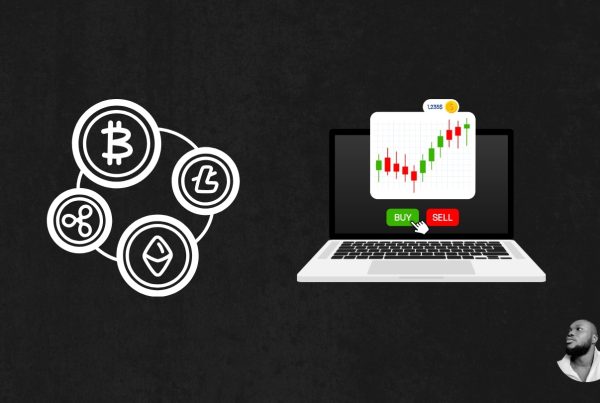Understanding Emission Schedules in Cryptocurrency
The cryptocurrency landscape is filled with various terms and concepts that can be overwhelming for newcomers and even seasoned investors. One such term is the emission schedule. This article delves into what an emission schedule is, its significance in the cryptocurrency industry, and how it impacts investors and the market as a whole.
What Is an Emission Schedule?
An emission schedule refers to the predetermined plan that outlines how new coins or tokens are created and distributed over time within a cryptocurrency network. This schedule is crucial for understanding the inflation rate of a cryptocurrency, its supply dynamics, and the overall economic model of the blockchain project.
Emission schedules can vary significantly between different cryptocurrencies. They can be linear, exponential, or even based on specific events or milestones within the network. Understanding these schedules helps investors gauge the potential value and scarcity of a cryptocurrency.
Types of Emission Schedules
Emission schedules can be categorized into several types, each with its unique characteristics:
- Fixed Supply: Some cryptocurrencies have a capped supply, meaning there is a maximum number of coins that will ever be created. Bitcoin is a prime example, with a total supply of 21 million coins.
- Inflationary Supply: Other cryptocurrencies may have an inflationary model where new coins are continuously created to incentivize network participation. Ethereum, for instance, has undergone changes that affect its emission schedule.
- Deflationary Mechanisms: Certain projects implement mechanisms to reduce supply over time, such as token burns, which can affect the emission schedule and overall supply.
- Event-Based Emission: Some cryptocurrencies release tokens based on specific events, such as reaching a certain block height or completing a network upgrade.
Why Is Emission Schedule Important?
The emission schedule plays a vital role in several aspects of a cryptocurrency:
- Market Dynamics: The rate at which new coins are introduced into circulation can influence supply and demand, affecting the price of the cryptocurrency.
- Investor Sentiment: Understanding the emission schedule can help investors make informed decisions about when to buy or sell a cryptocurrency.
- Network Security: Emission schedules often tie into the security model of a blockchain. For example, proof-of-work systems rely on miners being rewarded with new coins to secure the network.
- Long-Term Viability: A well-structured emission schedule can contribute to the long-term sustainability of a cryptocurrency project.
Real-World Examples of Emission Schedules
To illustrate the concept of emission schedules, let’s examine a few notable cryptocurrencies:

Bitcoin (BTC)
Bitcoin has a fixed supply of 21 million coins, with a halving event occurring approximately every four years. This halving reduces the reward for mining new blocks by half, effectively slowing down the rate of new coin creation. This predictable emission schedule has contributed to Bitcoin’s status as a deflationary asset.
Ethereum (ETH)
Ethereum’s emission schedule has evolved, especially with the transition to Ethereum 2.0 and the implementation of the EIP-1559 upgrade. This upgrade introduced a base fee that is burned, reducing the overall supply of ETH over time. The emission schedule is now more dynamic, responding to network demand and usage.
Cardano (ADA)
Cardano employs a fixed supply model with a total cap of 45 billion ADA tokens. The emission schedule is designed to release new tokens gradually, incentivizing early adopters while ensuring long-term sustainability.
How to Analyze an Emission Schedule
Investors should consider several factors when analyzing a cryptocurrency’s emission schedule:
- Supply Cap: Determine if the cryptocurrency has a maximum supply and how that affects scarcity.
- Inflation Rate: Assess the rate at which new coins are introduced and how it impacts the overall market.
- Token Utility: Understand the purpose of the tokens being emitted and how they are used within the ecosystem.
- Market Trends: Monitor how changes in the emission schedule correlate with price movements and investor sentiment.
Impact of Emission Schedules on Price Volatility
The relationship between emission schedules and price volatility is complex. A well-structured emission schedule can lead to price stability, while poorly designed schedules may result in significant fluctuations. Here are some key points to consider:
- Predictability: A predictable emission schedule can instill confidence in investors, leading to more stable prices.
- Supply Shock: Sudden changes in the emission schedule, such as a halving event, can create supply shocks that drive prices up.
- Market Sentiment: Investor perception of the emission schedule can influence buying and selling behavior, contributing to volatility.
Emission Schedules and Regulatory Considerations
As the cryptocurrency industry matures, regulatory bodies are increasingly scrutinizing emission schedules. Here are some considerations:
- Transparency: Clear and transparent emission schedules can help build trust with regulators and investors alike.
- Compliance: Projects must ensure their emission schedules comply with local regulations to avoid legal issues.
- Tax Implications: Understanding how emissions are treated for tax purposes is crucial for investors.
Future Trends in Emission Schedules
The future of emission schedules in cryptocurrency is likely to evolve as the industry matures. Here are some trends to watch:
- Dynamic Emission Models: More projects may adopt dynamic emission schedules that adjust based on network activity and demand.
- Increased Focus on Sustainability: Emission schedules that prioritize sustainability and environmental impact may gain traction.
- Integration with DeFi: Emission schedules may become more integrated with decentralized finance (DeFi) protocols, influencing liquidity and utility.
Frequently Asked Questions (FAQs)
What happens if a cryptocurrency reaches its maximum supply?
Once a cryptocurrency reaches its maximum supply, no new coins will be created. This can lead to increased scarcity, potentially driving up the value if demand remains strong.
How can I find a cryptocurrency’s emission schedule?
You can typically find a cryptocurrency’s emission schedule on its official website or whitepaper. Additionally, platforms like Bitrabo provide insights into various cryptocurrencies, including their emission schedules.
Are emission schedules the same for all cryptocurrencies?
No, emission schedules vary widely between cryptocurrencies. Each project has its unique approach based on its economic model and goals.
How do emission schedules affect mining rewards?
Emission schedules directly impact mining rewards. For example, in Bitcoin, the halving event reduces the reward miners receive, influencing their incentives and the overall security of the network.
Can emission schedules change over time?
Yes, some projects may adjust their emission schedules based on network conditions, governance decisions, or economic factors. It’s essential to stay informed about any changes that may occur.
Conclusion
Understanding emission schedules is crucial for anyone involved in the cryptocurrency market. These schedules not only dictate how new coins are introduced but also influence market dynamics, investor sentiment, and the long-term viability of projects. By analyzing emission schedules, investors can make more informed decisions and better navigate the complexities of the cryptocurrency landscape.
For the latest updates and insights into cryptocurrency news and price tracking, consider visiting Bitrabo. Stay connected with me on social media for more discussions on cryptocurrency: follow me on X, Instagram, and Threads.
Disclaimer: The information provided in this article is for informational purposes only and should not be considered financial advice. Always conduct your research before investing in cryptocurrencies.
The Crypto Watchlist of the Week 🔎
Subscribe to receive expert-curated projects with real potential—plus trends, risks, and insights that matter. Get handpicked crypto projects, deep analysis & market updates delivered to you.


